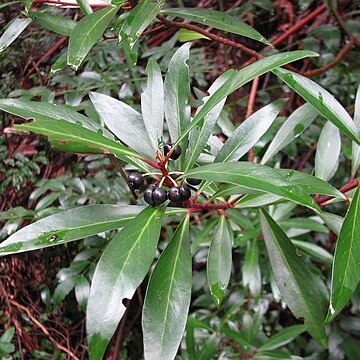Bushy shrub to small tree, 1.5–4 m high; branchlets smooth, reddish. Leaves: petiole 2–6 mm long; lamina lanceolate, narrow-elliptic or oblanceolate, 2–12 cm long, 0.6–3.5 cm wide, acute apex, paler below. Petals 3–9, linear-oblong or narrowly obovate, 4–10 mm long, 1.5–3.5 mm wide. Male flowers: pedicels 8–25 mm long; stamens 15–28; sterile carpel 1 (rarely absent or 2). Female flowers: pedicels 4–12 mm long; carpel 1 (or 2), sessile; ovules 9–18. Apocarps globose and deeply furrowed, 5–10 mm long, deep maroon to glossy black; transversely septate pulpa absent; stipes 0.1–0.3 mm long. Seeds 4–18, strongly curved, 2.5–3.5 mm long, 1.3–2 mm wide.

